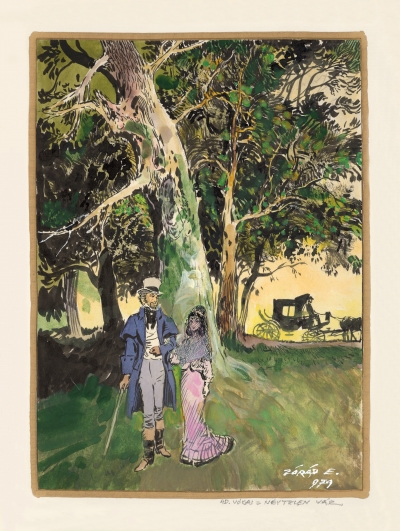art or business
Artwork of the week - Ernő Zórád: Nameless Castle
Novel-based comics own a very particular place in the medium’s history: even its name ('képregény' means 'graphic novel') comes from this tight literary bonding. Their structure was based on the American Classics Illustrated and the French Vaillant, and from the 1950-60s hundreds of comics appeared in various crossword and humor magazines. Hungarian comics researchers call this literature-supporting and distributing function the “socialist disguise” of the medium, and since they were always handled secondarily (due to their connection to the primary text), they never really had a chance to be judged on their own. Pál Korcsmáros, Attila Dargay, Attila Fazekas, Imre Sebők or Ernő Zórád - a few examples of the most famous comics artists.
Mór Jókai’s novel, the Nameless Castle was adapted by Zórád in 1979, and it was published in 18 parts on one spread in the Füles magazine. Five years later a publishing house called Táltos Kiadásszervezési GM released the comics in a separate, paperback booklet, and it was not just longer and bigger, but colored too. Its special feature was that Zórád made both the script and the graphic work, altough it was (and still is) a common practice, that the various work processes (writing, drawing, colouring, etc.) are often done by different people.
On this picture, you can see a panel from the Nameless Castle, without speech balloons and captions.
/Eszter Komornik/

